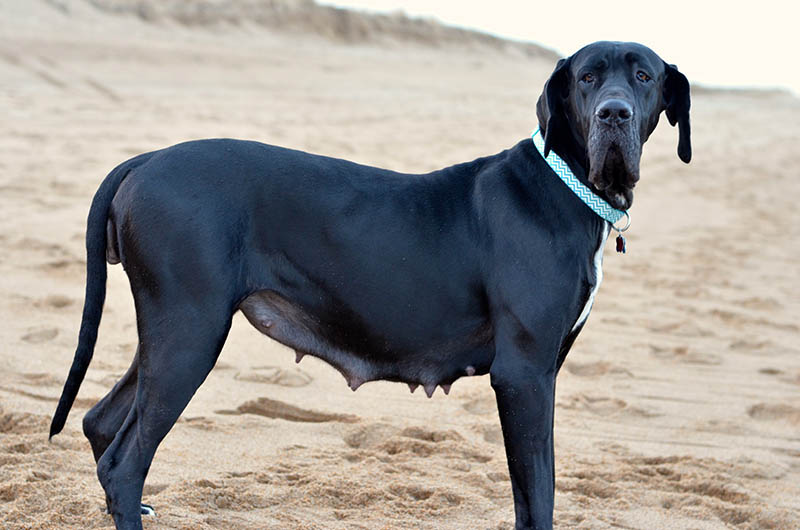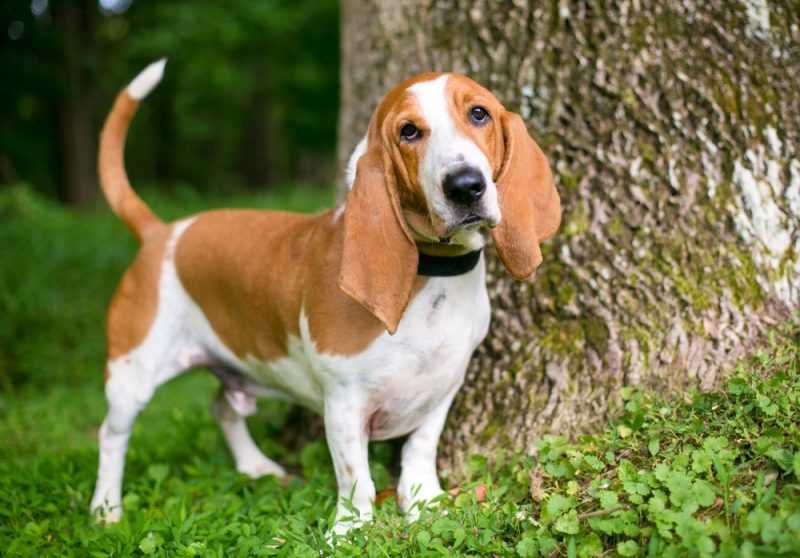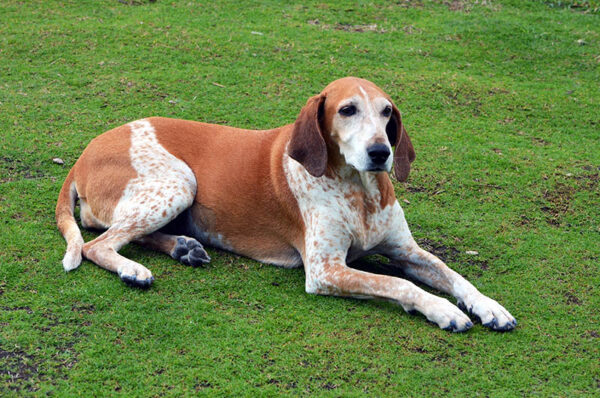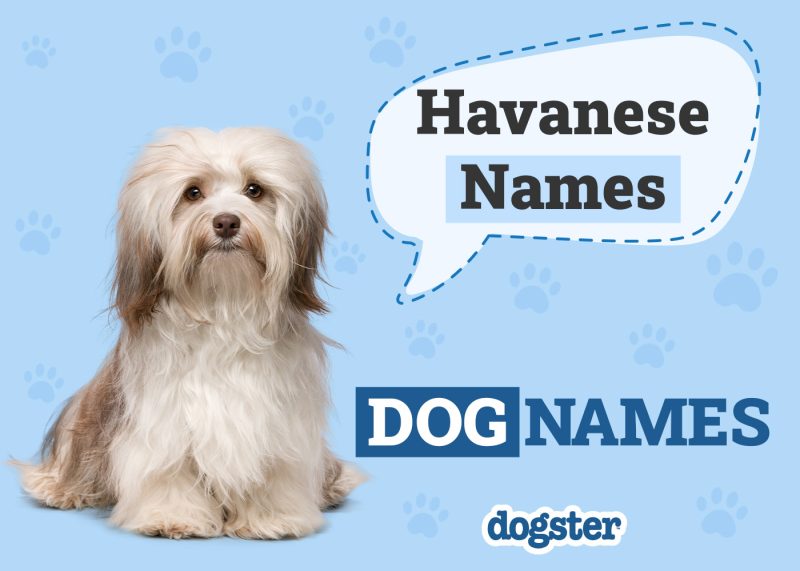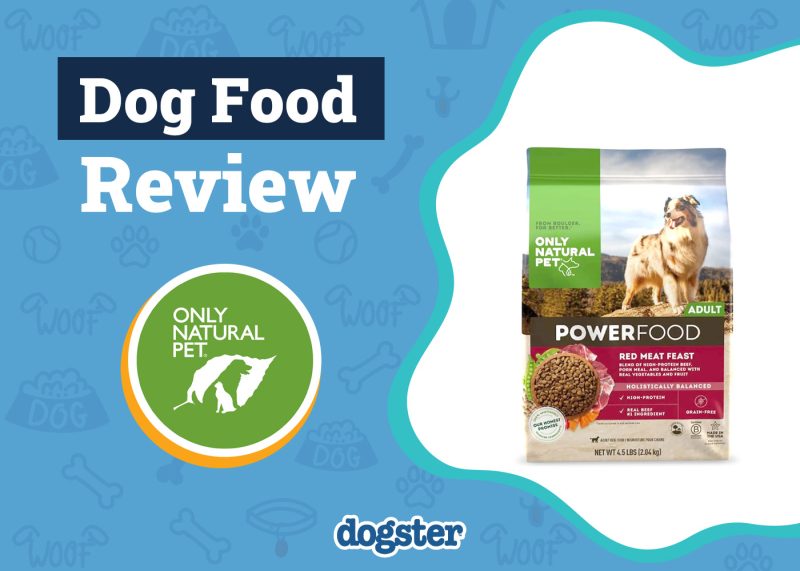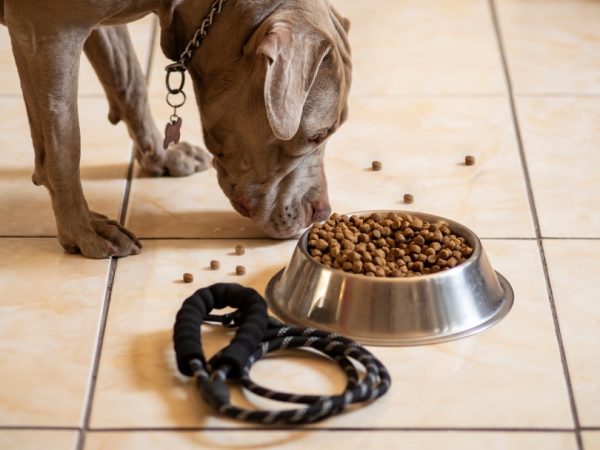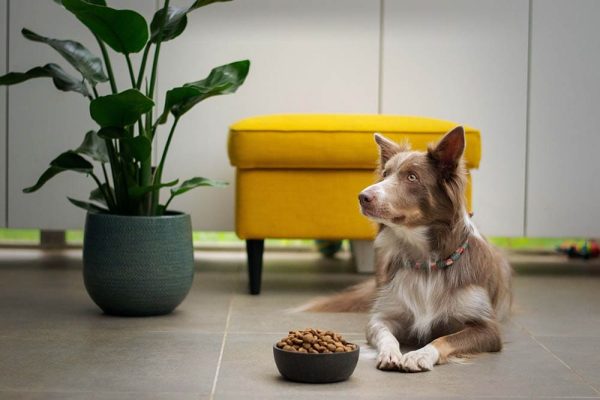Despite being one of the largest dogs, the Great Dane has the same gestation period as any other breed. They will be pregnant for around 63 days.
The easiest way to confirm your Great Dane’s due date is to count the days from when they were mated. However, if your dog goes over 63 days, check with your vet to ensure that nothing is wrong. Small dog breeds, such as Chihuahuas, typically have slightly shorter gestation periods, around the 62-day mark.
A Great Dane mother-to-be will grow and change physically and will likely exhibit different behaviors as her pregnancy progresses in stages, from early pregnancy all the way to labor.

Reproductive Cycle Changes in the Great Dane
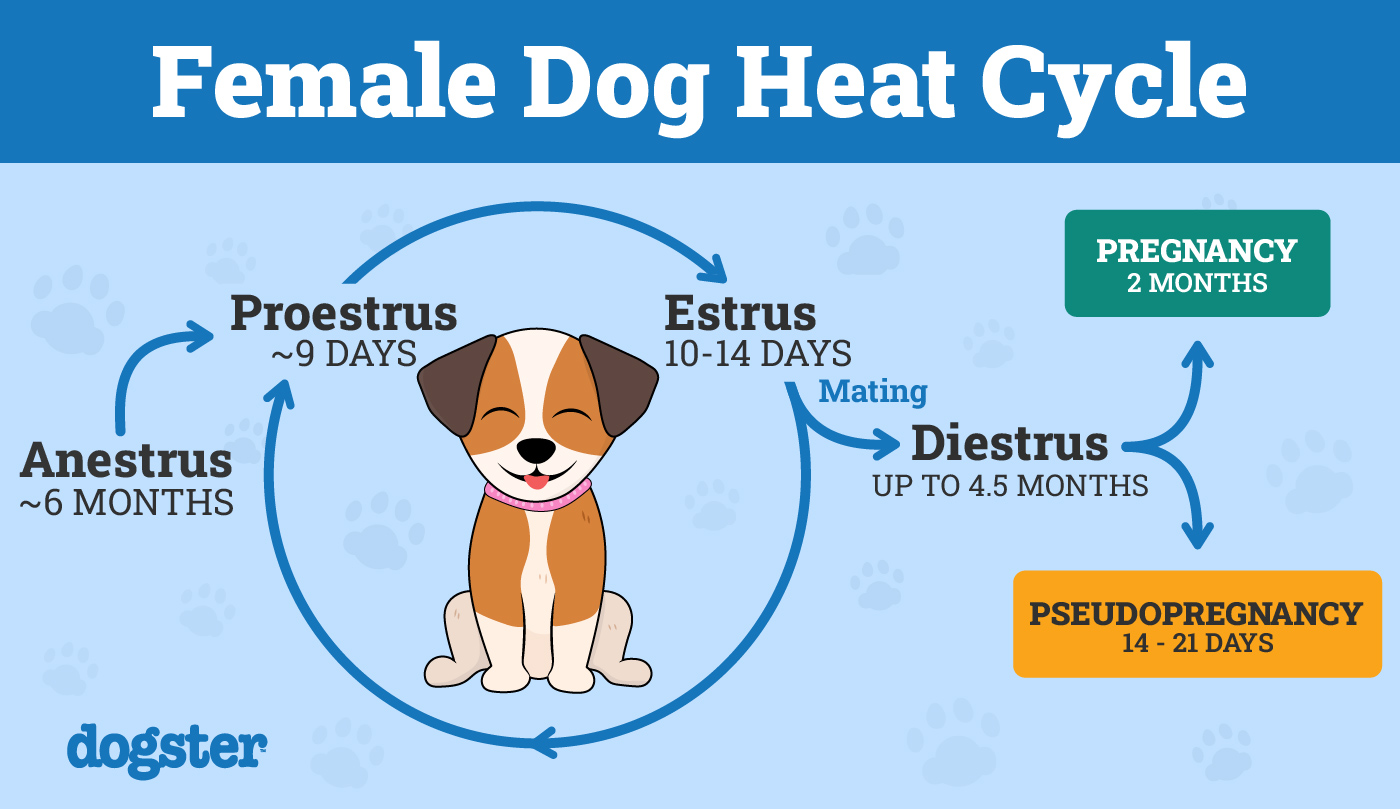
If your Great Dane might be pregnant, it’s important to familiarize yourself with the stages of reproduction. Breeders commonly track their dog’s reproduction cycle stages. This can help you tell how far along your Great Dane could be in her pregnancy.
- Proestrus: Before her eggs are released, your Great Dane will be in proestrus. Male dogs will take an interest in her, but she won’t reciprocate. You may see some bloody discharge and swelling of her vulva; this is normal and lasts for around 9 days.
- Estrus: This is a Great Dane’s fertile period. She will be receptive to dogs trying to mount her, and the eggs will be released 2 to 3 days later. You’ll notice she has less blood in her discharge, which becomes more fluid-like. This period lasts about 9 days.
- Diestrus: Diestrus is around 2 months long. During this phase, the female is no longer receptive to the male’s advances. This is the phase in which you’ll know if she got pregnant or is resting and ready to begin her cycle again.
- Anestrus: The period between a dog’s heat cycle starting and her rest days is 4 months. However, this may be longer for large breeds like Great Danes.
It is important to note that most dogs’ cycles are around once every 6 months, or twice a year. However, Great Danes are so big that they commonly only have one cycle per year or every 18 months.
What Happens When a Great Dane Gets Pregnant?
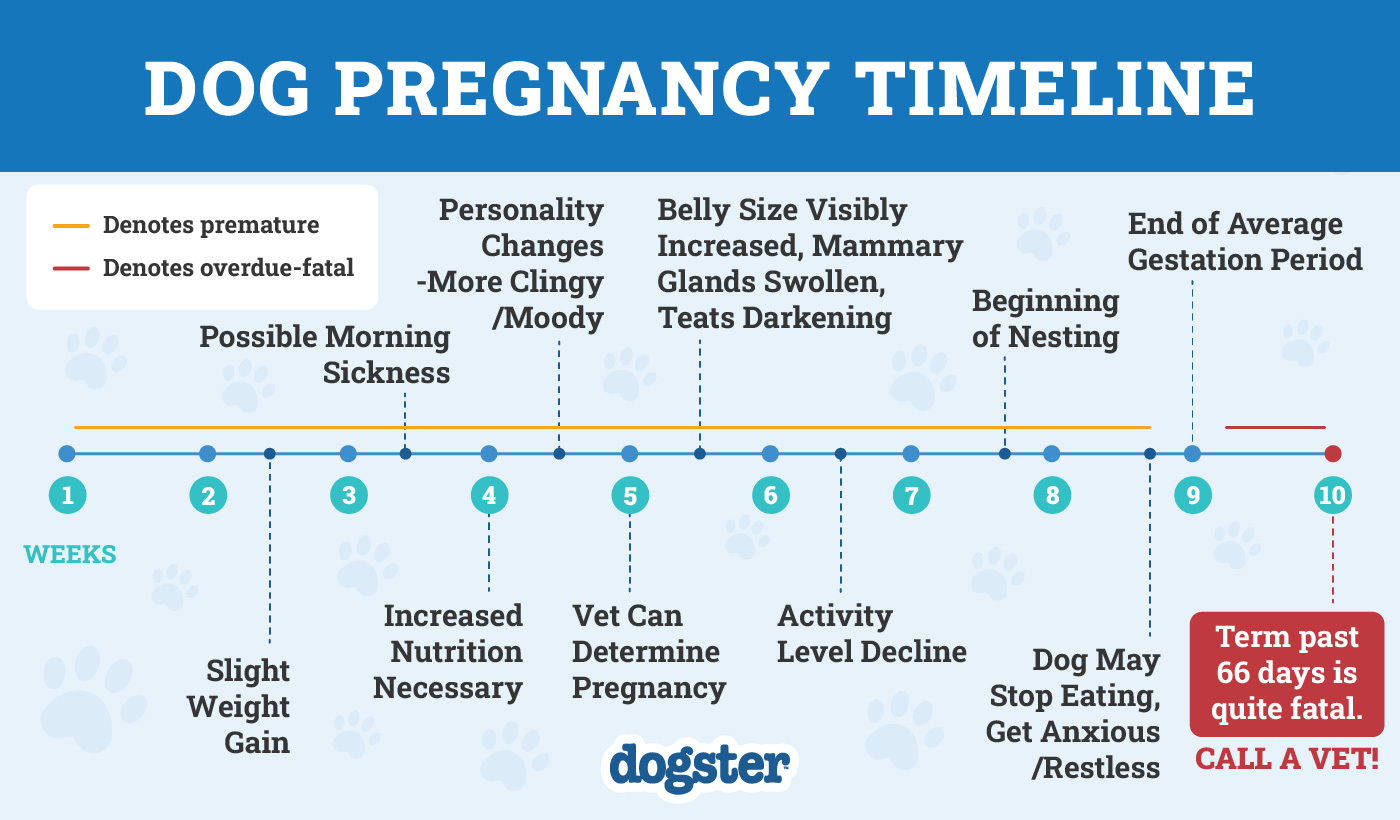
It’s a good idea to know the stages of pregnancy in dogs, as it’ll help you look out for any changes that are normal and those that aren’t. If you’re worried about anything during your Dane’s pregnancy, please speak to your vet.
Early Pregnancy
- Behavioral changes, such as increased sensitivity or irritability
- Gastrointestinal signs (some dogs vomit like some humans do)
- Appetite changes, including being more or less hungry
- More noticeable nipples and a firm or slightly distended abdomen
Taking your dog to the vet if you suspect that she’s pregnant is essential, as they can confirm pregnancy signs and help ease your mind. However, other illnesses can have the same signs as pregnancy, so it’s best to get them checked over to be sure.
Vets cannot be fully sure that your dog is pregnant until around the 28th day. This is when puppies can be seen on an ultrasound and start to be counted.
Mid-pregnancy
During mid-pregnancy, your Great Dane can become more affectionate and will begin exhibiting nesting behaviors. Nesting is her way of creating a comfortable space to birth and raise her puppies. However, she might also have increased irritability, so give her space and affection when she needs or wants it.
You should also notice weight gain and an increased appetite. Her teats may also begin developing. Now is an excellent time to start thinking about your Great Dane’s diet, as in the last third of her pregnancy, she will need her food increased. This is typically 1 1/2 times her normal amount of food, as she’s growing her puppies and supporting herself.

The End of the Pregnancy
You will notice more pronounced behavioral changes, including exhibiting nesting behavior, becoming tired more easily, and showing greater affection. There could also be nipple discharge as she prepares to lactate.
You will now need to increase her food intake to ensure she has enough energy to continue growing the puppies during the final stages of growth and to birth them. At this point, the vet will likely X-ray her to see how many puppies she has by counting their spines.
Preparing for Birth
Your Great Dane will need you to help her as much as possible as she gives birth. Setting up a whelping box is one of the first things you can do, ensuring that it’s safe, warm, and comfy. Make sure it’s big enough for the mother and her puppies and high-sided enough that she can climb out comfortably, but her puppies will be kept safe inside. Your veterinarian will further advise you on how to support your dog as she gives birth.
- A drop in rectal temperature to between 98 and 99 degrees Fahrenheit
- Reduced appetite
- Moaning or straining
- Restlessness
Stage Two of Labor
Contractions will begin and the puppies will emerge. Any puppies birthed should be born within the first hour of active labor, and they should continually be born from there on. There may be one every 2 hours or as short as 30 minutes apart. The mother will help clean the pups, but you may need to help her if she’s busy with one already, including clearing their nose and mouth.
Stage Three of Labor
The last stage of labor is the placental delivery, which comes between 5 and 15 minutes following each puppy. The mother may try to eat the placentas, and this is normal! However, don’t allow her to eat too many, as they can cause gastrointestinal upset.
Remember to count the puppies and the placentas as she expells them, as there should be one for each pup. Call your vet if any placentas might not have been delivered (known as retained placentas). Retained placentas can cause significant problems, such as womb infections.
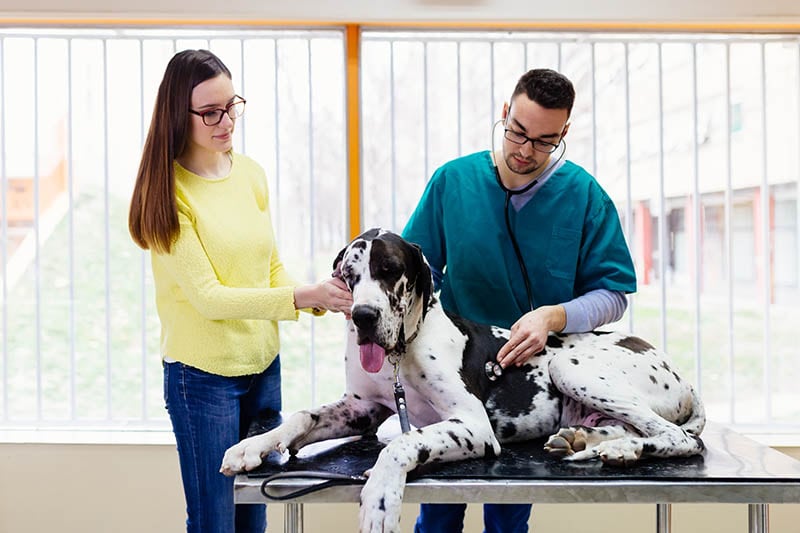
When Should I Be Concerned During My Great Dane’s Labor?
There are a few reasons to contact your vet during labor. It’s good to know these and be prepared.
- If your Great Dane has been contracting for 20 to 30 minutes with no puppy, as there may be an issue with birthing them
- If labor lasts for more than 12 hours with no puppies
- If there are more than 2 hours between puppies
- If it’s been 3 hours since the start of labor or the water breaks with no puppies
- If lots of blood is discharged
- If the discharge being lost is foul-smelling
- If the puppies are malformed
- If no placentas are passing
- If your Great Dane seems to be in pain or has collapsed
After-Birth Tips
Keeping your Great Dane comfortable, calm, and quiet after she’s had the puppies will allow her to rest and bond with them. Regarding food, her appetite will typically return within 48 hours. It can return sooner, though, and you can offer her small pieces of food if she takes them.

Final Thoughts
On average, a Great Dane’s gestation period is 63 days. However, let your vet know if you have concerns or believe your dog has passed her due date. She will have plenty of vet visits during her pregnancy, including during early pregnancy and mid-pregnancy, to check her weight and general health. If you have any concerns before or during your Great Dane’s labor, contact your vet, as they can give you advice or even intervene if needed.
See also:
Featured Image Credit: mkzdillon, Shutterstock
